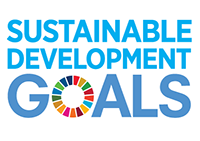Migrant Population
Definition:
Percent of population who are internal or external migrants to the area from five years earlier.
Methods and Limitations:
Mobility status refers to the status of a person with regard to the place of residence on the reference day, in relation to the place of residence on the same date five years earlier at the provincial level. Persons who have not moved are referred to as non-movers and persons who have moved from one residence to another are referred to as movers. Movers include non-migrants and migrants. Non-migrants are persons who did move but remained in the same city, town, township, village or Indian reserve. Migrants include internal migrants, who moved to a different city, town, township, village or Indian reserve within Canada. External migrants include persons who lived outside Canada at the earlier reference date
This indicator aggregates the number of internal migrants and external migrants to calculate migrate population.
Sources:
Statistics Canada. 2022. (table). Census Profile. 2021 Census of Population. Statistics Canada Catalogue no. 98-316-X2021001. Ottawa. Released September 21, 2022.
Statistics Canada. 2017. Canada [Country] and Canada [Country] (table). Census Profile. 2016 Census. Statistics Canada Catalogue no. 98-316-X2016001. Ottawa. Released November 29, 2017.
Statistics Canada. 2013. Canada (Code 01) (table). National Household Survey (NHS) Profile. 2011 National Household Survey. Statistics Canada Catalogue no. 99-004-XWE. Ottawa. Released September 11, 2013.
Statistics Canada. 2007. Canada (Code01) (table). 2006 Community Profiles. 2006 Census. Statistics Canada Catalogue no. 92-591-XWE. Ottawa. Released March 13, 2007.

 Migrant Population in the Sustainable Development Goals
Migrant Population in the Sustainable Development Goals
Click on the SDG to reveal more information
11. Make cities inclusive, safe, resilient and sustainable
Cities are hubs for ideas, commerce, culture, science, productivity, social development and much more. At their best, cities have enabled people to advance socially and economically.
However, many challenges exist to maintaining cities in a way that continues to create jobs and prosperity while not straining land and resources. Common urban challenges include congestion, lack of funds to provide basic services, a shortage of adequate housing and declining infrastructure.
The challenges cities face can be overcome in ways that allow them to continue to thrive and grow, while improving resource use and reducing pollution and poverty. The future we want includes cities of opportunities for all, with access to basic services, energy, housing, transportation and more.

